Frieze Art Fair: Is it is just an overblown trade fair?
The Frieze Art Fair, which is back in Regent’s Park, has been going for more than a decade, but with its high entry fees and lack of prices on the art work itself, it’s just a playground for the rich
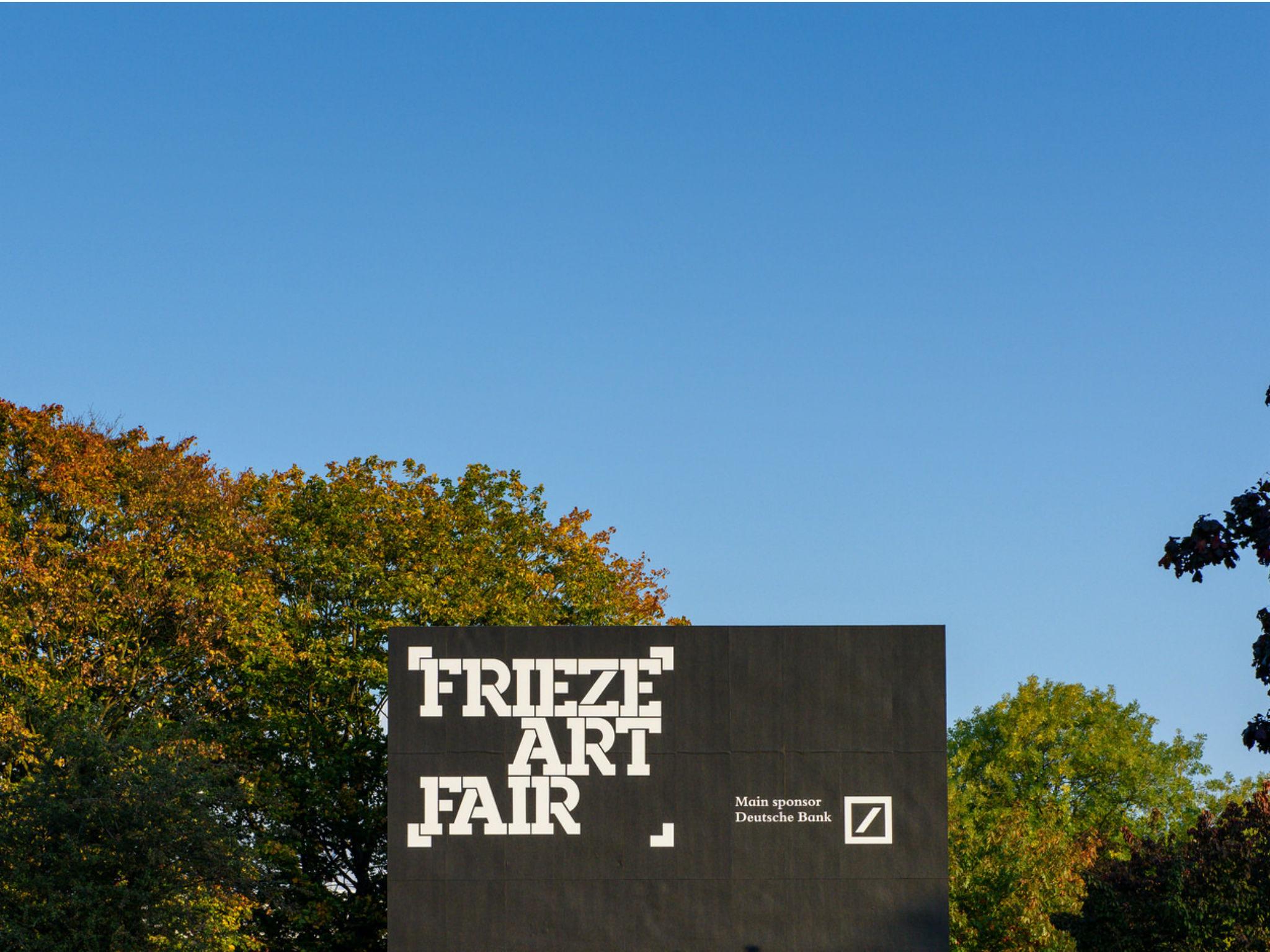
Your support helps us to tell the story
From reproductive rights to climate change to Big Tech, The Independent is on the ground when the story is developing. Whether it's investigating the financials of Elon Musk's pro-Trump PAC or producing our latest documentary, 'The A Word', which shines a light on the American women fighting for reproductive rights, we know how important it is to parse out the facts from the messaging.
At such a critical moment in US history, we need reporters on the ground. Your donation allows us to keep sending journalists to speak to both sides of the story.
The Independent is trusted by Americans across the entire political spectrum. And unlike many other quality news outlets, we choose not to lock Americans out of our reporting and analysis with paywalls. We believe quality journalism should be available to everyone, paid for by those who can afford it.
Your support makes all the difference.“See you at Frieze this year?” I asked the sculptor Alison Wilding the other day, casting around for topics of common interest. We’d just bumped into each other at a sculpture show in north London. Her friend Phyllida, our woman at the Venice Biennale who recently made a very good job of beating up the British Pavilion, was just about to join her, she told me. “I don’t do Frieze,” she replied. The poisoned chalice fell to the floor between us, shattering into tiny pieces. We stared, momentarily, completely unflustered. It was of course a conversation stopper – as she knew it would be.
I walked away, wondering how much there was to dislike about Frieze, and why. Why would one not want to do Frieze? Perhaps there are a quite a lot of reasons, as it happens.
What is it exactly? Well it’s the name of a reputable art magazine for most of the year. And then, for just four days in October, the art magazine almost melts back into the shadows, and the name is appropriated by a trade fair of the same name at the bottom end of Regent’s Park, which is held in a virginal-white marquee of truly enormous proportions. It seems to increase in size year on year. In shape, it’s a little like a giant field hospital, and it’s built for hand-picked refugees from austerity.
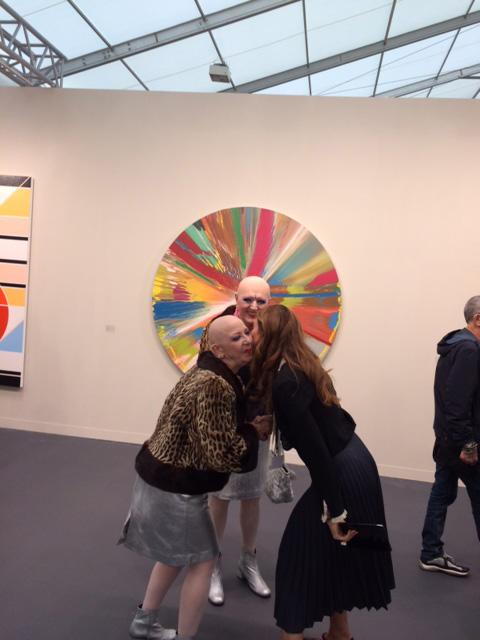
If you’re on the minimum wage or thereabouts, it’s unlikely that you’ll choose to spend your money on the cost of entry, which is somewhere between about £40 and £45 this year (and £60 upwards if you want to take in the second Frieze location, Frieze Masters, which deals with older art, and is fifteen minutes away from here by courtesy bus). The first of the four, days is Premium Day, and it costs more. Goodness knows why. That’s about three times the price of entry to the best of the temporary exhibitions at the Royal Academy or the National Gallery. That’s a lot of money – just for the privilege of being granted an exclusive opportunity to spend yet more money. The fair has been going for more than a decade, and it specialises in the selling of contemporary art at very high prices. It’s not easy to become an exhibitor. You have to sell the right kind of contemporary art to qualify. What exactly is the right kind of contemporary art? If you get rejected, you will discover that yours was not. It’s as simple as that, dummy.
Once in, having first been parted from your money for the privilege of just being there, you walk up and down endless, smoothly-grey-carpeted corridors of numbered booths in which dealers from the world over show off their art wares to collectors and aspiring collectors, who have flown in from all over the world, we are told. No one walks or takes a train. Do you in fact find yourself spending much money? Many might wish to do so, and find themselves maddeningly impeded. Spending money is often quite a difficult thing to do when it comes to modern art. It is not merely a question of being a collector with money. It is a question of being the right collector, the kind of collector who will not upset the market by, say, trying to make a bit of money quickly by selling it again the day after next. Gallerists are very watchful types. They don’t just sell to anybody. And they are especially watchful if the artist is on the up and up. That’s when the sharks begin to circle.
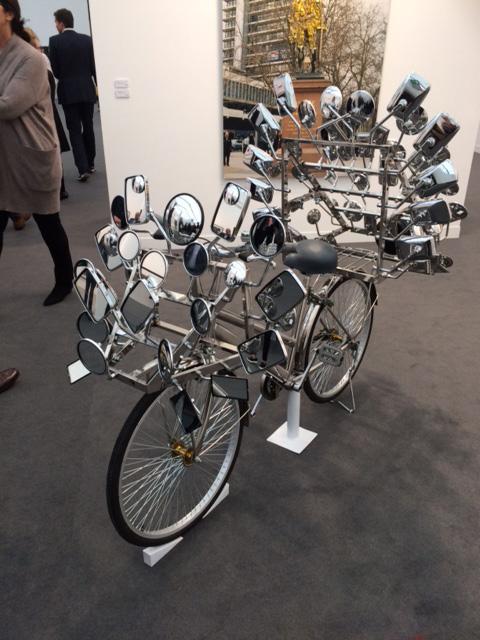
The other interesting point to bear in mind is that nothing is actually priced at Frieze. You can’t just go up to the label, see the price, and ponder on whether or not you can afford this or that. Each work is named and described all right – but not priced. Would it be too embarrassing to blurt it out on a label? Yes, to find out the price you have to ask. And even when you enquire, there may be a certain amount of obfuscation. After all, who are you, Mr Nobody? Or perhaps you are Mrs Somebody.
How much does it actually cost to take and fit out a stand here? I ask a few gallerists as I do my rounds, and there seems to be a surprising reluctance to say. Is money a slightly unseemly topic until it changes hands? Perhaps. This one doesn’t know. Another one is sure that it’s pretty expensive because fairs like this always cost a lot. I strike lucky with the London dealer Timothy Taylor, who has a big space of about ten metres by 12. Or could it be more than that? We both look. We both try and measure the space with our eyes. We’re not quite sure. I admire the way he’s decorated the floor, in lovely curlicues – every stand is personalised to a degree. It rather depends upon how much money you want to spend.
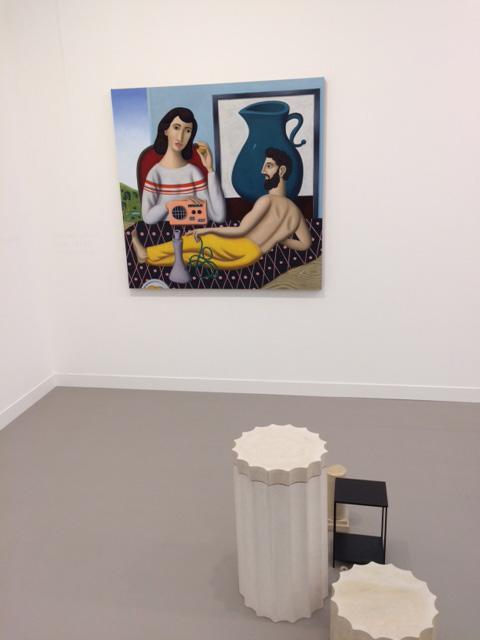
How much did it cost to hire the stand, Tim? Well, every stand comes with the basic stuff – electricity, white walls from which to hang things. And then the rest is up to you. The floor was by a Mexican artist called Eduardo Terrazas. And the total price? Hold your breath, Yorkshire penny-pinchers. $60,000-$70,000 (£45,600-£53,200) for the stand itself, and another $30,000 (£22,800) to kit it out, personalise it, memorably. So this stands costs him about $100,000 (£76,000) for four days. Which means that lot of money needs to change hands to make it worth his while.
What’s the art like then this year? Here are a few broad-brush generalisations. Painting is back in vogue in a big way. Once trendy stuff like conceptual art and video art have all but disappeared. It’s just not really saleable, is it? The kind of work that’s here, often eye-catchingly big and brash, can be sold to rich collectors to hang in bedrooms or depend from pretentious atria: huge, splashy, superficial, poor-quality abstracts in day-glo colours; figuration’s back too, relatively realist or even glancingly Soviet-realist retro, with a bit of an experimental twist so that you couldn’t quite deem it to be a bit old fashioned. Tired remnants of Pop Art are everywhere too. How many times did I see a Pepsi or a Coke bottle, a Mickey or a Minnie Mouse reprised in sculpture or painting or print? Countless times. It’s so easy to re-cycle cartoon imagery. Much of the sculpture is sub-Koons, jokey, kitschy – fake balloons stacked one above another on a fake stone plinth. Some jokes are better and more elegant than other – a gleaming bicycle with a thousand and one rear-view mirrors attached, for example by Dinh Q. Le, and on display at PPOW’s stand (B18) is worth a look. Matthew Ronay from the American West Coast has fresh-looking work at Marc Foxx’s stand. The Eigen Art stand is worth some attention too, with its paintings by Ryan Mosley and David Schnell. Most of the stuff here is unserious and casually self-celebratory, with an easy-on-the-eye zinginess. Painting as evidence of – and a back-drop to – conspicuous consumption on the grand scale.
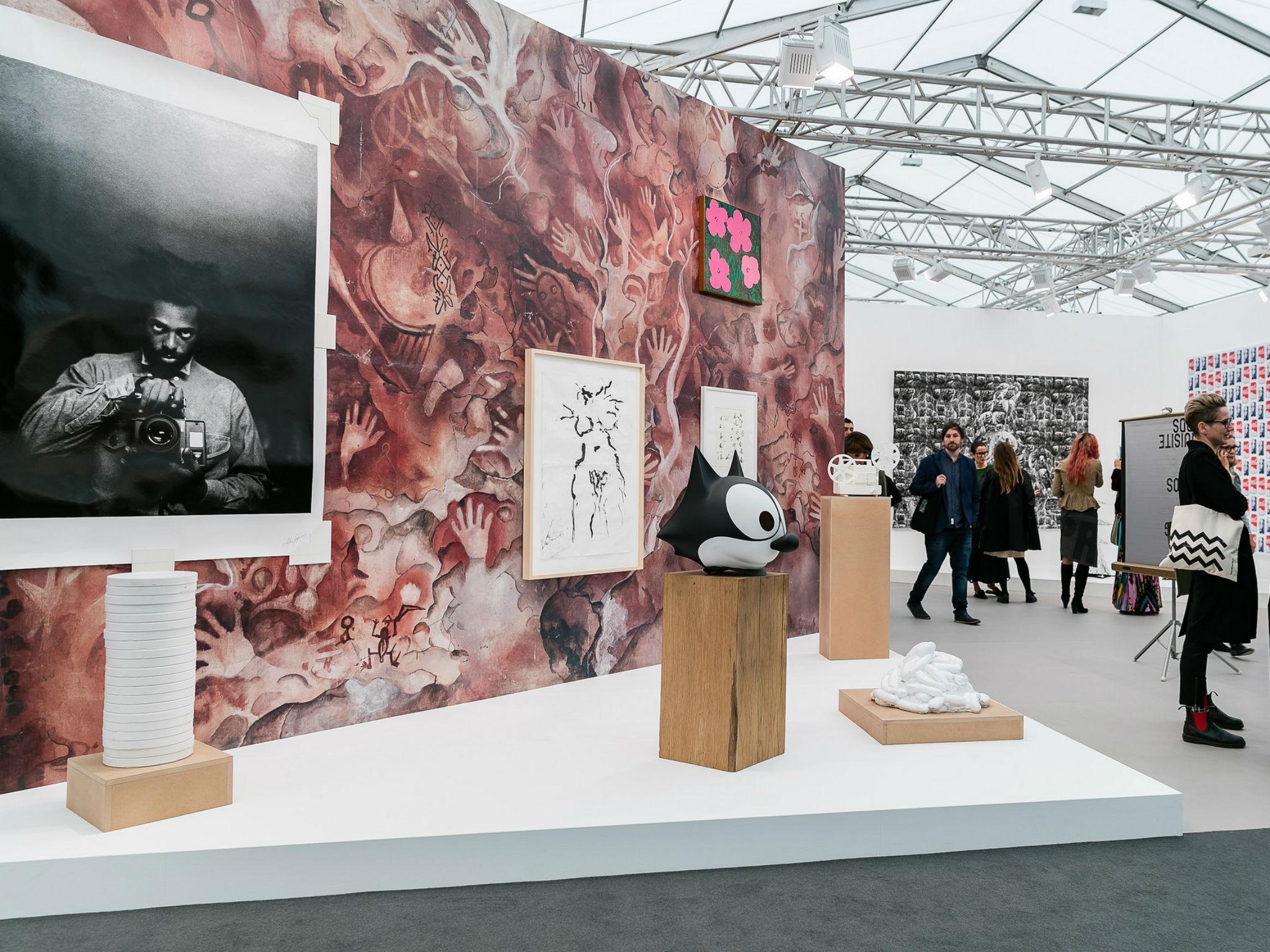
Are there many sharks in the privileged hospital tent during Frieze? Undoubtedly. None of them is dressed to look exactly like a shark, needless to say. Some of these sharks are also dealers because this is a notoriously under-regulated world. There is nothing to stop a dealer, for example, from bidding anonymously for a work by an artist represented by himself, and thus bidding up its value. It’s a very slippery business indeed, and the value of contemporary art is difficult to judge because so much of it is unpredictably new – and has therefore not yet even begun to find its own level as a raw commodity. After all, art is perfectly useless, isn’t it? You have no idea what it’s worth until someone blurts out that it’s worth something, and then a chorus line of sheep with critical noses agree.
On the other hand, it is just possible that today you may be a Mr and Mrs Somebody, in which case accepting your money could prove to be a little less troublesome. As a Mr and Mrs Somebody, you will also have spent these past few days attending innumerable parties on the Frieze fringe in order to see and know, and be seen and known, as a bibulous, garrulous, glad-handing Frieze personage. That will have helped a great deal. And once you are at Frieze, you will collect many Frieze anecdotes as you walk around because it is very important to have been at Frieze, and for that fact to be widely known. After all, almost everybody goes to Frieze, and those unfortunate, and perhaps even a little impoverished, absentees will always have the good grace to listen and nod in silence when being regaled by the many stories of Frieze. They will be told by those who have spent hours at the heart of it, walking up and down those dreary corridors as if you were doing, every minute that god sends, a Veronese passagiata, in your glittery heels and your red suit and your slouch beret and your yellow-framed spectacles. Being photographed in front of a Damien Hirst spin painting and perhaps, just a tad regrettably, buying less art than you might have hoped, but almost certainly not lamenting the fact that you have not yet spotted the somewhat curmudgeonly, rancorous ghost of Alison Wilding.
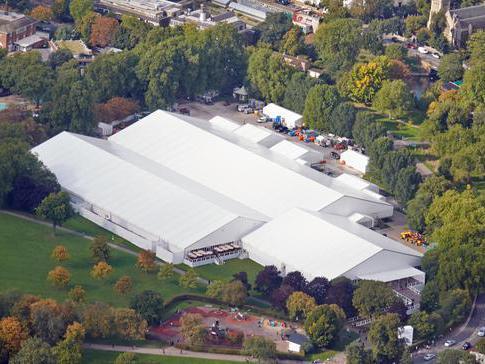
I run into British art critic Matthew Collings. I’m trying to find a coffee at a price that a human being on a regular income wouldn’t baulk at like a frightened steed. I try for ten minutes. I give up. What do you think, Matthew? The worst yet, he says. Never seen it so bad.
Art for the nouveaux riches, we agree, damn ‘em.
Frieze Art Fair, Regent’s Park, 5 to 8 October (www.frieze.com)
Join our commenting forum
Join thought-provoking conversations, follow other Independent readers and see their replies
Comments